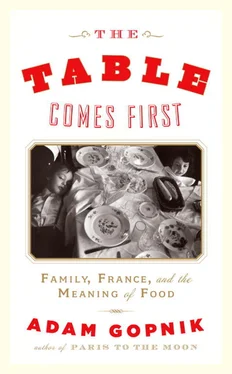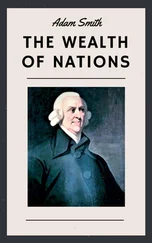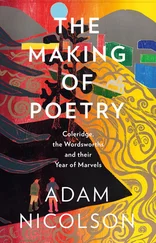Alcohol, as Malcolm Gladwell has reminded us, is above all a myopic drug: it forces the imbiber’s attention ever more narrowly upon what’s in front of him. It closes us off and isolates us, that’s its odd charm. (And its special danger. You can see only the boy or girl in front of you—but not the truck bearing down on the side road.) A little glass of wine, and all there is in the world is the date and the table—or often, in lonely moments, the bar and the bartender—but the world and its stresses flee for a moment into a vague blur of the background.
Caffeine, on the other hand, is a far-sighted drug. Several sips of café noir and the sipper feels charged up, the corners of the café gleam, and we look around the room, ready to take on the world again. We read while we drink coffee, romance while we drink wine. Coffee, one might say, is a flow drink, wine a focus drink. Focused, we can let our attention wander; feeling in the flow, we can happily try to focus once again. By a familiar mental or merely chemical trick, we dose ourselves with one drug to get our brains to produce the opposite effect: our tongues burn intolerably as we eat capsaicin, which is the hotness in hot peppers, and so the brain overproduces its own opiates, to compensate. The pleasure of spicy food is a trick we play on our inner junkie. Wine, though clinically a depressant, forces us to feel happy for no reason; as we sink, we search for pleasure. Coffee, though a stimulant that should propel us out of our seat, lets us concentrate more fiercely on the task at hand. (Good writers have often been drunks, but none has written well while drunk; the drinking is an escape from the pressing pain of concentration—awareness—fueled by coffee through the working day.) Wine takes us from the world, and coffee restores us to it again. In between, we eat.
A restaurant meal, in 1789 as now, is really a short sonata in head fuels. Without the drinks, we could hardly find our hungers. Wine “depresses” and narrows the buzzing room until we feel happily alone, on our own little island. Without it, a restaurant can feel as unbearably crowded as a subway car. After the meal (then as now richer in a restaurant than at our own home, and more lulling in its fullness and richness), coffee reawakens us to the world—the room’s walls press outward again. If there is a tiny bit of salt in the coffee—an old French trick—the enhancement is even greater. The walls recede, the door opens, and the night beckons us on.
The café and restaurant have their interplay in history, but they also had one that went on every night. In Henry Murger’s mid-century Scènes de la Vie de Bohème —the novel that gave us La Bohème , and which is also the best memorial of ordinary food life in early-nineteenth-century France—the “Bohemians,” artists and writers, all go out to dinner after the hero, Rodolphe, suddenly comes into money. Significantly, they go to one of those “exotic” Provençal restaurants, this one on the Rue Dauphine, “well known for its aioli and for the literary tastes of its waiters,” but eat there only moderately, since they have plans for a late supper, too. Only after their restaurant dinner do they go to their pet café, the Café Momus, where “from that day the establishment became uninhabitable for the rest of the patrons.” There, they have coffee and liqueurs. The restaurant belongs to food, and to its waiters; the café to caffeine, and to its patrons. The two together, like scrub oak and driftwood in a beach resort, make the landscape of the modern food town.
Brillat-Savarin saw this—that coffee, once a breakfast drink alone, had, in the era of the restaurant, come into general use “after dinner as an exhilarating tonic.” Grimod, too, recognized the essential alliance of the two elements. “It would now be unthinkable to invite guests to the simplest of meals were there not two or three liquors flanking the coffee pot,” he said. In the café first, and in the restaurant later, the marriage of the two true fuels was made, and modern life began.
* * *
Beyond all this—beyond even the life of the lewd hanger, the marriage of the two modern drugs, the merging of faraway cooking styles into one idea of “French food,” beyond the spirits flanking the coffeepot and the advent of the Opening Drink and the Concluding Coffee—there was a world of writing and thought in Paris then that made the new thing, the restaurant, happen. Priscilla Parkhurst Ferguson, in a path-making article on the invention of gastronomy in nineteenth-century France, borrows the French sociologist Pierre Bourdieu’s idea of a social “field” as the unit of social life to explain why Paris became the place where dining first happened.
This idea of a social “field” seems opaque until one sees that it is not really far from what we already call in common speech “a scene.” There is, for instance, a fine French bakery in the little American seaside town where I am writing this, started there by a couple of émigré Frenchmen, but there is no food scene . The shop will live and die, thrive or fail, together with the two Frenchmen who planted it. A bakery in New York, on the other hand, will be replaced by another, perhaps a better one. Or we might say, “There are a couple of good rep cinemas in Philadelphia, but there’s really no movie scene,” meaning a crowd of critics, commentators, loyal fans. There can be good basketball players in a city and no basketball “culture,” no scene, and a good jazz scene in places that few jazz players actually come from. A field is really just the fancy name for a scene. The scene most often conjures up the object of its desires. In London in the 1970s, for instance, good writing about food happened before the food did: a scene emerged before there was a subject. There were places to eat all throughout Europe at the end of the eighteenth century. There had to be. But there was a restaurant scene in Paris alone.
One thing that makes culinary history, the story of how people used to make and eat food, different from other kinds of stories about the past is that it has as its object something that still goes on every day for everyone—eating is the great democratic equalizer, like breathing, more even than sex is—and at the same time it also goes on particularly, in weird or expensive ways, for a handful of people. It is as if in the history of culture everyone in every city in every age were painting three pictures a day: separating common history from “art history” would then become very hard. They were eating just as often, cooking and spicing their meals just as precisely to the tastes of the people about to eat, in Bulgaria in 1790 as they were in Paris. But in Paris, and only in Paris, was there yet a real food scene—a mass of critics, diners, chefs, and above all writers who were talking and writing about food in new ways. They didn’t eat more in Paris. They couldn’t. But they did talk about it more than they did in other places, and then wrote about the things they said.
This may seem to make more of the role of writers than one should. What do you mean… they wrote their food? But it happens all the time. Studying the growth of American baseball at the beginning of the twentieth century, the great sabermetrician Bill James once pointed out that you can’t really separate what Christy Mathewson and Ty Cobb were doing from what Grantland Rice and Ring Lardner were publishing. The growth of the sports page made the growth of sports possible; the baseball writers made what we think of as baseball. We sense that the two are different and we should, since what the cook or the first baseman does is harder than what critics and columnists do. But you need both to get high-order accomplishment. It was the scene that gave birth to the restaurant, as much as the restaurant that gave birth to the scene. It takes a scene to make a world.
Читать дальше












